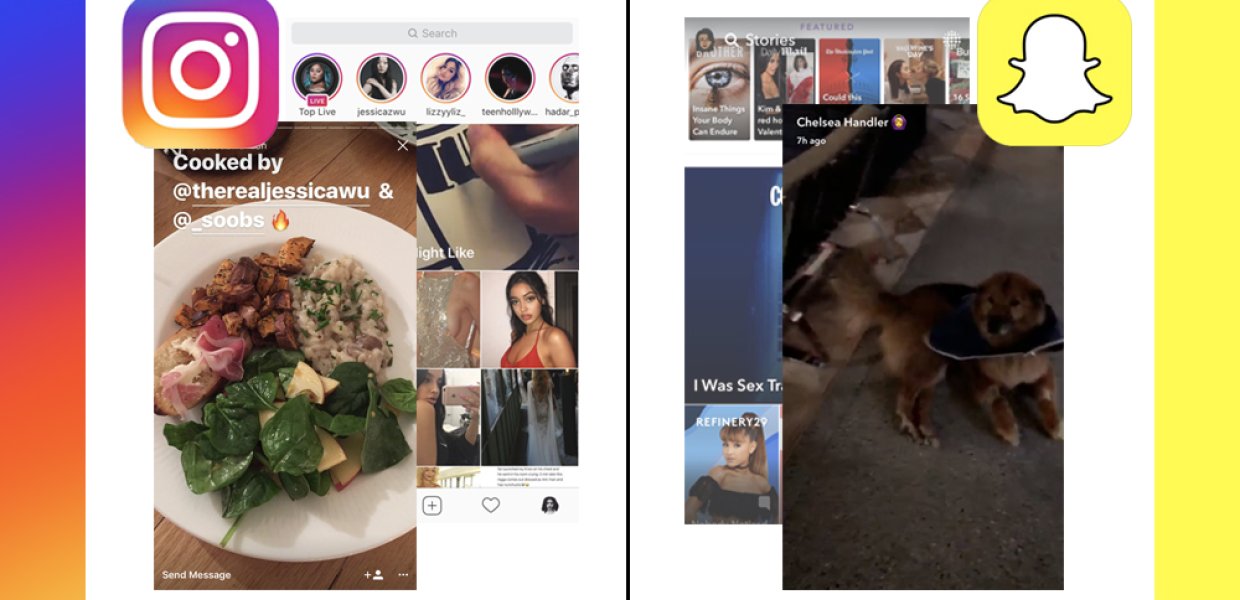Ever since Instagram’s release of Stories last August, the tech scene has pitted the two apps against one another. Without denying the obvious competitive one-ups made by both social platforms, it’s worth viewing both brands individual product accomplishments and audiences to assess future intentions of differentiation.
Snapchat Stories
The original curator of user generated video content dubbed “Stories,” Snapchat still holds the upper hand in user adoption and partnerships through this content. From the Super Bowl, to fashion week to the Our Story content, Snapchat still uses its Stories platform to position itself as a channel with a niche community, a double edged sword for the platform that has proven to keep users engaged when viewing brand-generated content.
As reported by Snaplytics and Marketingland, at the end 2016, 55% of brands' Snapchat followers viewed their Stories with 99% of viewers watching the whole thing. Even though the adoption of Instagram Stories had increased by this point, Snapchat has still been able to retain hold over viewership of brand content. We can assume that the same can be said about individual user Stories, which means that their is great opportunity in furthering this
Aside from its niched viewership and ability to retain watcher engagement, Snapchat’s Stories are more regulated and curated at this point. The brand makes it a point to crowdsource in a way that stays closer to the storytelling concept by linking different vantage points together through this video content.
Instagram Stories
Instagram Stories, while similar in tap-through functionality to Snapchat, has its own distinct attributes. Because Instagram (and its parent Facebook) have such a large audience of users, the reach of Instagram Stories has scaled and proved to be a great area of opportunity for advertisers.
Even with its quick catch-up, Instagram Stories still lacks the actual storytelling capabilities that make Snapchat a dynamic content viewing tool. With that being said, it still leverages live-streaming technology and pushes this active content to a widespread audience, even alerting users. In some respects, suggested live Stories could be a great product differentiator in that the data being used to customize this content to users could make the content more relevant.
While it may be too early to tell which brand will succeed as the victor of user-generated storytelling, Instagram and Snapchat both have unique advantages that are contributing to product differentiation. The question now is, which brand will prove to be more worth the ad spend for publishers and brands?
Flickr / Photo by amberjadeoolala









